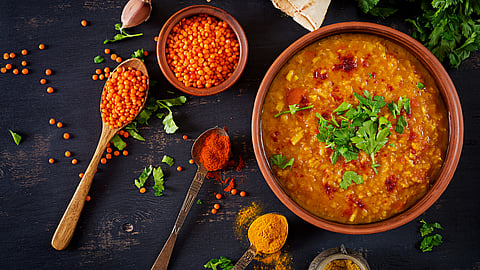Things every food content creator needs on their website
Food content creators have an audience that’s not only reading for information but also sometimes for leisure. Your website absolutely needs to fit the aesthetic. Food websites need to be designed with the persistent thought of how much time your readers will spend on your page scrolling and looking for the perfect solution. This means that you need specific targeted content that will resonate with your audience very quickly.
For any food content creator there are some unavoidable factors that must be considered on the daily. Having the right website and the perfect content management tool would help ease much of the problem. Developing the right front end feel can take a while as you don’t want to mimic the other websites in the industry. Choosing your gold standard and then sticking with it could make a world of a difference.
List of 8 things you would need on your food website
1. High resolution images
Because your audience isn’t able to smell the aroma of your dishes through their digital screens, your next best option is a solid high quality image. These would add all the flavor to your website. We’d suggest getting a high end camera and focusing on the plating for this one. A pro tip would be to not use stock images - use authentic images but present them in a spectacular manner.
A problem you can face is that a high resolution image could slow down the loading time of your website, thereby lowering your website performance. You can reach out to your tech team to help with this. We, here at Quintype, ensure that our clients can carry HD images on their website without it affecting their performance whatsoever.
2. Nutritional information
It’s the ‘why; of your content. Why should readers go through this recipe or product? What’s in it for them?
With food websites, finding creative ways to display nutritional values can be tricky. Breaking the text form and having a separate space for this can help users glance through piles of content with ease. Having clickable items - to help better navigation can also be handy.
Another feature you could look into is helping readers in using nutritional values as filters. This way specific requirements could be met. Effective categorization, be it - vegan, paleo, diabetic, etc are good ways to personalize content for the reader.
3. Ingredient list
This is the most useful part of your entire content. Even if you’re selling products. Everyone wants to know what they need to prepare a particular dish or what’s gone into what they’re about to consume. You have to bridge this through simple quick ways.
The ingredient list is often carried on the left or right side of the page to break the monotony. It’s also often carried within a colored box to set the distinction. Allow readers to choose measurement metrics they understand to adhere to the wider audience.
4. Serving size
The serving size would also help readers to adjust the recipe. Some websites allow readers to choose serving size and make the changes automatically - this can be considered as well.
5. A link to recipe or products
As a food content creator you want your audience to move around your website - increase their retention rates. While publishing a recipe, you must link other similar recipes or products used within the recipe that you’re selling. This helps with affiliate marketing while also helping your readers make reliable purchases through the source site.
On the e-commerce page, you can link your content which uses the product and intrigue your readers. This way they’re able to determine the value of the product and if they’re wanting to experiment, it would urge them to take that step.
6. Audience reviews
Unlike most product websites, a food website can have colorful reviews where your readers can post images of dishes they’ve made across cultures. This is also a great segment to have on your website where you feature people following the same recipe or adding their own little sauce to it. Audience or user generated content is a sure way of connecting with your readers and encouraging them to participate more actively with your website.
7. Alternative items
As a food content creator, you probably are in the habit of trying new things and recipes. It’s crucial for the nature of your job. However, it’s also important to note that not everyone might be down to try new things. While introducing products/ingredients try to find where they are available and what a potential substitute could be so that those without access to the same are not ignoring the recipe altogether.
8. Social media
Social media takes up a large part of our everyday life today which is why it could be helpful to link your website to your social media posts and vice versa. Readers can quickly follow your page and stay updated with the new content you have rolling out. This also increases familiarity. This way they have a constant reminder to come back to your website.
Are you excited to start your food website? We have another blog up on how we can help you set up your food website, check it out!

